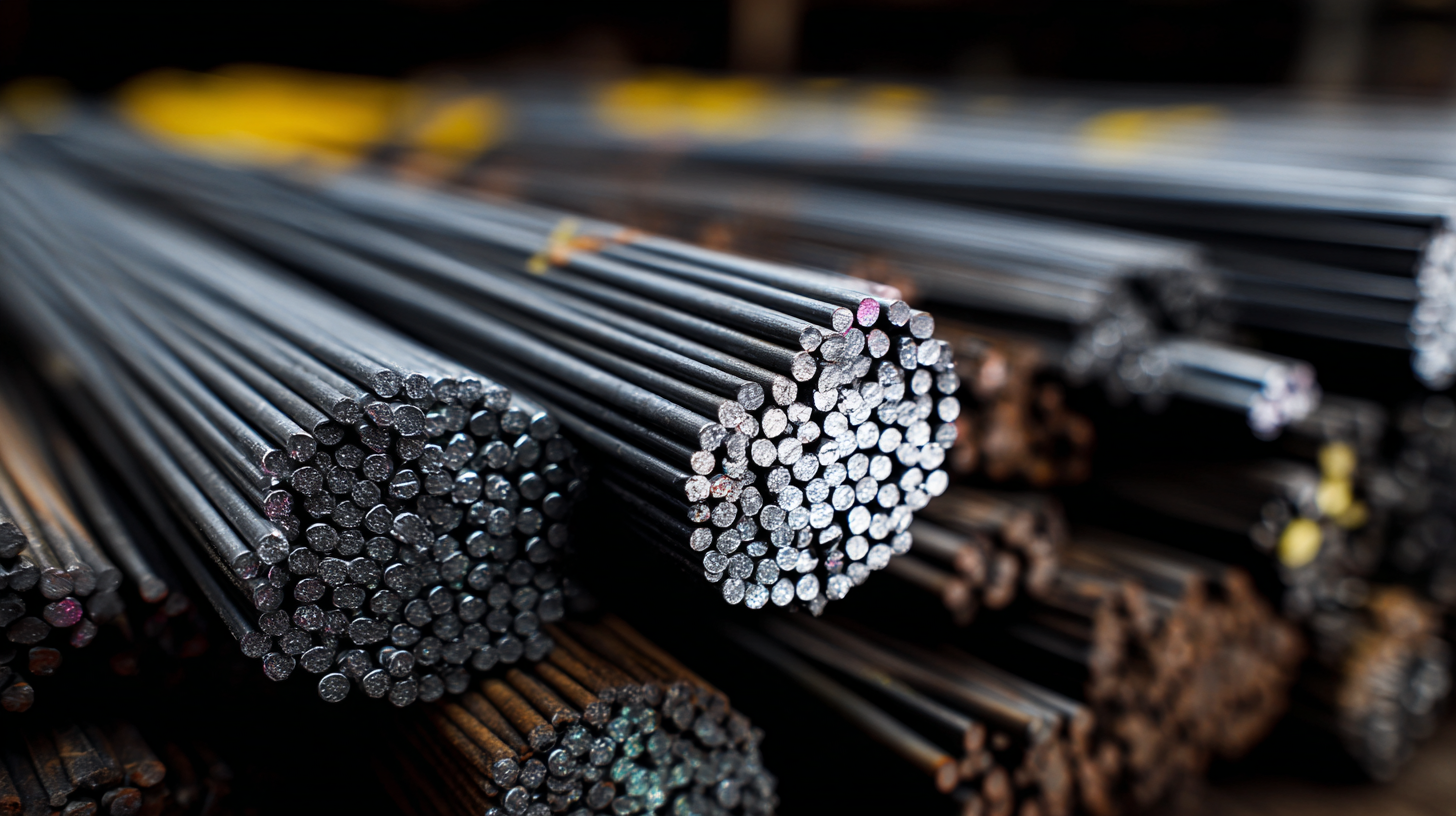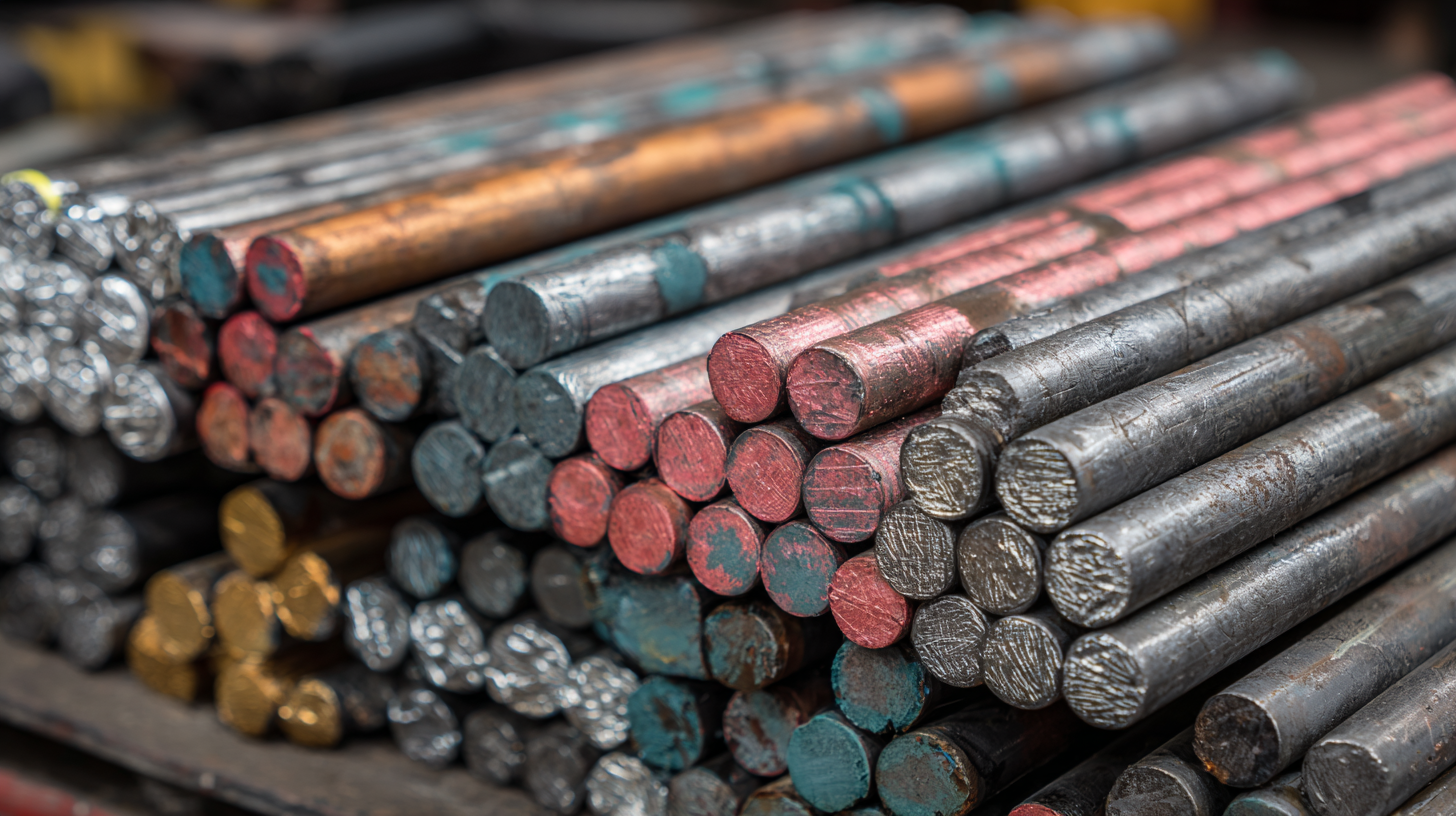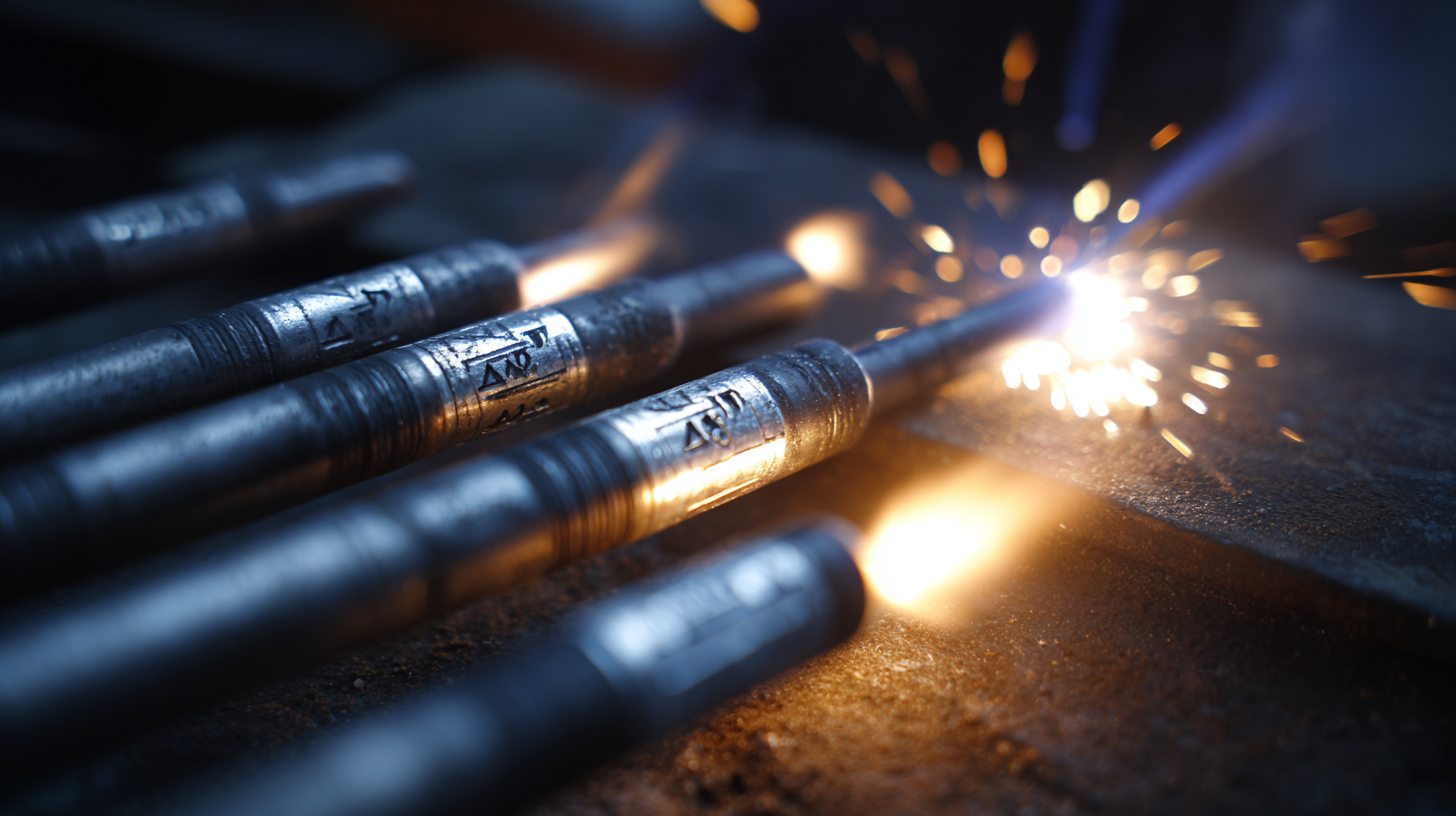Solutions for Enhancing Welding Quality with 6010 Welding Rod
Table of Contents
- Common Welding Challenges with 6010 Rods
- Understanding the Importance of Proper Technique in Welding
- Tips for Selecting the Right 6010 Rod for Your Project
- Welding Equipment and Settings to Optimize 6010 Performance
- Troubleshooting Common Defects in 6010 Welds
- Best Practices for Maintaining Welding Quality with 6010 Rods
- FAQS
- Conclusion
- Related Posts
In the welding world, picking the right electrodes is a pretty big deal when it comes to getting quality and efficiency in your welds. Among all the options out there, the 6010 Welding Rod really stands out—it's known for delivering strong, clean welds, and folks often use it for everything from construction to repairs. Believe it or not, using the right kind of welding rod can make a huge difference—better penetration, fewer defects—and skipping that step could even mean paying more in repairs or facing delays of up to 30%. Wenzhou Tianyu Electronic Co., Ltd. has been in the game since 2000, consistently producing top-notch welding electrodes, including the popular 6010 series. We’re all about excellence in stainless steel, carbon steel, and low alloy electrodes, aiming to help welders do their best and get solid results on every project. Our goal? To make sure you’ve got the best tools and support to succeed, no matter what you’re working on.

Common Welding Challenges with 6010 Rods
 Working with 6010 welding rods can be a bit tricky sometimes, and you’ll likely run into a few common issues that impact the quality of your welds. One big challenge is keeping the arc stable, especially if your workpiece is dirty or rusty. Interestingly, the American Welding Society mentions that around a quarter of welding problems are due to poor surface prep. So, taking the time to clean the surface really pays off—these rods are known for their deep penetration and ability to weld through contaminants, but only if the surface is in good shape.
Working with 6010 welding rods can be a bit tricky sometimes, and you’ll likely run into a few common issues that impact the quality of your welds. One big challenge is keeping the arc stable, especially if your workpiece is dirty or rusty. Interestingly, the American Welding Society mentions that around a quarter of welding problems are due to poor surface prep. So, taking the time to clean the surface really pays off—these rods are known for their deep penetration and ability to weld through contaminants, but only if the surface is in good shape.
Another thing welders often mention is how 6010 rods tend to spit and produce quite a bit of spatter, which means extra cleanup afterward. A recent study from the Welding Institute pointed out that using incorrect heat settings can bump spatter levels up by as much as 30%. To keep that in check, it’s all about maintaining steady travel speeds and adjusting your amperage based on how thick your material is. If you get these little things right, you'll find that your welds turn out better overall, with less rework needed, which saves you time and money in the long run. It’s all about tweaking your approach and paying attention to those details!
Understanding the Importance of Proper Technique in Welding
When you're working with 6010 welding rods, getting your technique right is pretty key if you want strong, quality welds. These rods are known for their deep penetration and steady arc, which make them a solid choice for all sorts of jobs—like pipe welding or working out in the field. But here’s the thing: to really take advantage of these benefits, you’ve gotta pay attention to your technique. Otherwise, the final weld might not look or hold as well as it should.
One of the basics is keeping the right angle and the right distance from your workpiece. It helps to keep a steady travel speed too—no zigzagging or weaving, because that can mess up the bead’s shape. Oh, and don't forget about setting the right amperage; if it’s too low or too high, you might end up with weak fusion or a bunch of spatter. Focus on these little details, and you'll find your welds become more consistent, efficient, and just overall better. Plus, you’ll spend less time fixing mistakes and more time getting things done right the first go.
Solutions for Enhancing Welding Quality with 6010 Welding Rod
| Technique | Description | Benefits | Notes |
|---|---|---|---|
| Proper Angle | Maintain a 15-30 degree angle with the workpiece. | Improved penetration and bead profile. | Adjust for different positions. |
| Travel Speed | Control the speed of the welding torch. | Consistent weld profile and reduced defects. | Practice to find optimal speed. |
| Electrode Manipulation | Utilize circular or zigzag movements while welding. | Enhances fusion and minimizes undercut. | Experiment with techniques for better results. |
| Heat Control | Manage the heat input to the weld area. | Reduces warping and distortion of materials. | Use preheating when necessary. |
| Joint Preparation | Ensure joints are clean and correctly aligned. | Maximizes strength and integrity of the weld. | Inspect prior to welding. |
Tips for Selecting the Right 6010 Rod for Your Project
When you're trying to pick out the right 6010 welding rod for your project, it’s pretty important to think about what exactly you'll be working on and the materials involved. The 6010 rod is a favorite for field welding jobs, especially in industries like construction or pipeline work since it offers really strong, deep welds—even when conditions aren’t perfect. According to the American Welding Society (AWS), these rods are coated with a cellulose-based layer, which helps them perform better outdoors and keeps them from messing up if it’s rainy or windy out there.
Another thing to keep in mind is the rod’s diameter. Usually, they come in sizes from about 1/16 inch up to 1/4 inch. The size you choose affects how deep the weld penetrates and what the bead looks like. From what I’ve seen, a 1/8 inch rod hits a pretty sweet spot for most jobs—it balances heat input and penetration pretty well. Smaller diameters work better if you’re welding thinner materials or doing more detailed, delicate work. Oh, and don’t forget to double-check your welding machine’s settings. For 6010 rods, the right amperage is usually somewhere between 70 and 150 amps, depending on the size of the rod. Getting that right makes a big difference in the overall quality and efficiency of your welds.
Welding Equipment and Settings to Optimize 6010 Performance
So, when you're trying to get the best out of those 6010 welding rods, having the right gear and settings makes all the difference. These days, using fancy new digital pulse inverter welders can really boost performance—they give you better control over voltage and amps, which helps you get a steady, clean weld with good penetration. Plus, features like adjustable pulse frequency are pretty handy—they let you manage heat input better, which is super important for keeping the weld strong and avoiding warping.
Getting your settings right is just as key. For 6010 rods, a straight polarity setup is usually the way to go. You wanna find that sweet spot with your travel speed—neither too fast nor too slow. As for amperage, somewhere around 70 to 110 amps usually does the trick, depending on how thick the material is. Also, keeping that arc short and close helps produce a more stable, concentrated arc, leading to a better weld overall. As technology keeps advancing and new power sources come out, welders have more tools than ever to improve their work and get fantastic results with 6010 rods.
Troubleshooting Common Defects in 6010 Welds
When you're working with 6010 welding rods, getting a solid, high-quality weld is pretty important to keep things structurally sound. That said, welds can sometimes come with their own set of issues, and knowing how to troubleshoot is definitely useful. Common problems you might see include not enough penetration, porosity (those tiny holes in the weld), and lots of spatter. So, let’s break this down a bit. Inadequate penetration happens when the weld doesn’t fully fuse with the base metal, which can create weak spots—definitely not what you want if you're aiming for strength. Luckily, you can usually fix that by tweaking your technique a little—maybe bumping up the amperage or making sure the joint prep is spot on.
Porosity is another common headache. It shows up as small holes or bubbles trapped inside the bead, usually caused by gas pockets. This often happens if the metal isn’t clean enough beforehand or if your technique isn’t quite right. So, to avoid that, it’s a good idea to clean your metals thoroughly before you start welding, and keep your travel speed and angle consistent. As for too much spatter, that can mess up how neat your weld looks and might even weaken it. You can cut down on spatter by fine-tuning your machine settings and keeping a steady hand during welding. Once you get a grip on these issues and learn how to address them, your 6010 welds will come out much better—more reliable, stronger, and just overall cleaner-looking.

Best Practices for Maintaining Welding Quality with 6010 Rods
When you're working with 6010 welding rods, sticking to good practices is pretty much essential to get solid results. These rods are honestly awesome for making really strong, durable welds—whether you're dealing with sheet metal or pipes—mainly because they penetrate deep and are super versatile. The American Welding Society emphasizes that having the right technique makes all the difference. If you're not careful, issues like slag getting trapped or not enough penetration can weaken your welds and cause problems later on.
Here's a little tip: keep your travel speed steady and hold your angle consistently. It might sound simple, but a steady hand really helps in laying down even welds, which is key to making the joint strong. Oh, and don’t forget—make sure your work area is nice and clean. Dirt, rust, paint—anything that shouldn’t be there—can really mess with your weld quality.
Another thing to keep in mind is your equipment. Picking the right power supply can make a big difference. For 6010 rods, you want a machine that can deliver at least around 125 amps—that kind of power lets you move faster and gives you better control over the arc. Also, it’s a good idea to periodically check your machine’s settings and give it a quick inspection to avoid any hiccups or technical issues mid-job.
All in all, paying attention to these little details really helps you get the best out of your welding process and keeps your results top-notch.
FAQS
: Common challenges include difficulty in controlling arc stability, particularly on dirty or rusty surfaces, excessive spatter production, and the need for proper heat settings.
Poor surface preparation can lead to welding defects, as about 25% of these defects are attributed to it. Ensuring a clean surface improves the performance of 6010 rods.
Excessive spatter is often caused by improper heat settings, which can lead to up to 30% more spatter. Consistent travel speeds and appropriate amperage settings can help minimize this issue.
Key techniques include maintaining the ideal angle and distance from the workpiece, consistent travel speeds, and avoiding weaving to ensure uniform bead profiles.
The ideal amperage for 6010 rods typically falls between 70-110 amps, depending on the thickness of the material being welded.
Advanced welders, like digital pulse inverter models, provide precise control over voltage and amperage, allowing for consistent penetration and cleaner arcs, which improves weld quality.
Maintaining a short arc length enhances weld quality by producing a more stable and concentrated arc, which is crucial for effective welding.
An appropriate travel speed that balances between too fast and too slow is necessary for optimizing the performance of 6010 rods and reducing the chances of defects.
Mastering proper techniques leads to improved efficiency and reliability, resulting in stronger joints and reduced rework during welding projects.
By addressing common issues like surface preparation, spatter control, and employing the correct techniques and equipment settings, welders can enhance their efficiency and achieve better results.
Conclusion
When it comes to welding, the 6010 welding rod really shines because it’s super versatile and gets the job done, even in the toughest conditions. In this blog, I’ll run through some common issues folks run into when using 6010 rods—trust me, proper technique and tweaking your equipment settings can make a huge difference in how well it works. Picking the right 6010 rod for your specific project is a big deal, and I’ll also cover how to troubleshoot those pesky defects that sometimes pop up during welding.
We'll also look at some best practices for keeping your welding quality top-notch when you're working with 6010 rods. This way, you can be confident that your welds will be strong and reliable. With over 22 years of experience in making top-quality welding electrodes, Wenzhou Tianyu Electronic Co., Ltd. is here to back you up. We’re dedicated to helping welders like you succeed by sharing helpful tips and supplying the right products for all your welding needs.
Related Posts
-

Unmatched Quality: China’s Premier Inconel 625 for Global Markets
-

Understanding Common Challenges with Best Smaw Electrode for Global Buyers
-

Unveiling Top Techniques for Best Tig Welding Cast Aluminum: Essential Insights for Global Buyers
-

How to Navigate Import and Export Certifications for the Best Welding Brazing Products in Global Trade
-

How to Identify Top Manufacturers for the Best Copper Brass Products Globally
-

Exploring Opportunities for Ac Welding Rods at the Record Breaking 137th Canton Fair
Blog Tags:

